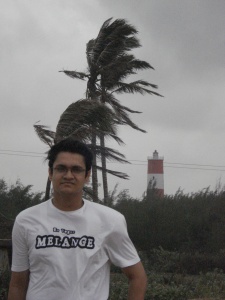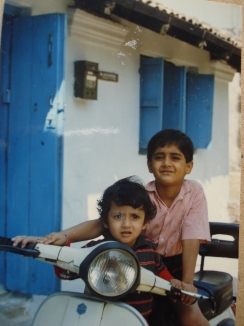I asked my roommates what the word Puri reminds you of. They said food. Yes Puri would remind an average Indian of an unleavened deep-fried Indian bread, commonly consumed on the Indian subcontinent. But for an Odiya like me Puri is small town on the coast of Odisha. A place where people come to wash away their sins, a place where the belief in God crosses all boundaries, the city of the Lord Jagannath (Lord of the Universe). As a part of the original Char Dham pilgrimages, of which the other legs are Dwaraka, Badrinath and Rameswaram (Kedarnath, Kashi, Yamunotri and Gangotri are not the Char Dham as per common beliefs), a pilgrimage of the temples of India is not considered complete without a journey to Puri.
From my earlier posts you would have identified me as a non-religious person (mentioning again and again that I am not a very religious person should have really helped), but my religious ideologies change as far as Puri Jagannath is concerned. One may tag me as a phony…well what can I say. What are my religious ideologies? Do I believe in God or not? So for once and for all let me settle this. I do believe that there is a supreme power that governs the entire cosmos; you may call him God, the Almighty, Allah or by any name for that matter. On the same hand I don’t believe in the concept of temples or prayer houses. I do not want to offend any religion but I don’t believe that the supreme entity can be captured in an Idol, a sculpture, a book, a tree or in any living thing for that matter. Religion is a belief, a way how you live rather than whom or what you worship.
Ok ok kuch zyada hi serious ho gaya. So Puri…the last time I visited the place was around two years back. I had gone for my cousin brother’s marriage in Bhubaneswar. What made the trip more special was that my entire family was with accompanying me. My elder brother and my sister-in-law were visiting India for the first time after their marriage and my father was able to get a long leave (being a doctor in the Indian Army does not help). After arriving early in the morning at Bhubaneswar we took a cab to Puri. Being a non-Odiya my mother took upon her to make my sister-in-law get familiarize with the culture of Odisha, the story behind the Puri Jagannath Temple and the various customs and rituals that make the temple unique.
After a journey of about an hour and a half we reached the temple located on one end of the Bada Danda or the Grand Road. Once inside the temple premises we located our Guide, who was a priest at the shrine. He asked us whether all of us understand Hindi (you see my sister-in-law doesn’t know O about Odiya). While the question asked was a very valid one it was amusing to me as a kid I never had that option. After visiting the main temple and attending the afternoon aarti, we went on the customary tour of the temple premises. We visited the temple kitchen, the largest of its kind in the world. What fascinated me about the kitchen was the sheer quantity of food being cooked and what was not so fascinated was that they still used traditional methods of cooking (clay pots, wood as fuel etc.).
Finally we sat down for the bhog, the Mahaprasad. The Mahaprasad consists of 56 items, starting from chutney, to curd, to rice, to Daal, to desserts and what not. For a foodie like me it was a dream come true. Finally after an hour long meal we bid goodbye to the Lord.
While we didn’t had the time to visit the Puri beach to relive the nostalgic memories I fondly remember spending hours on the beach. One such visit still remains fresh in my memory. I was around 10 years old, all my uncles, my aunts & my cousins were there. We had spent at least 6 hours on the Puri beach. What made the day even more special was that it was a full moon day, full moon=higher waves=more fun. A visit to the beach in the later years saddened me. Commercialization had taken a toll and it was not the same beach that had given me such fond memories in the past.
Puri is also famous for the Rath Yatra or the Chariot Festival. Once every year Lord Jagannath along with his siblings Lord Balabhadra and Goddess Subhadra leave the temple to visit their aunt (even Gods do need vacations). How they reach there is a sight to behold. The Divinities are placed in huge brightly decorated wooden chariots and are taken to their Mousi’s place being pulled by hordes and hordes of devotees (1.5 million by some estimates). If one wants to see true devotion to the Almighty in all its glory this is a place to be. I had the pleasure of seeing the Rath Yatra and touching the sacred ropes (those which are used to pull the chariot) on a visit to Puri four years back. It was surely a sight to behold and a trip to remember.
Puri…what can I say. A place where one comes to known the true meaning of faith, a place home to one of the most scenic beaches in the country. You may love it or hate it but one cannot ignore it. Jai Jagannath.









Recent Comments